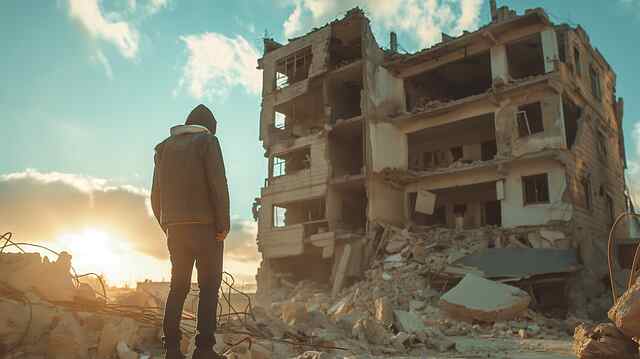Why Iranian Nuclear Sites Fail? Despite bold public claims from the White House, Iranian Nuclear Sites Fail to Cripple Program.
Notice that preliminary U.S. intelligence assessment indicates that recent American military strikes on Iran’s nuclear infrastructure. But did not destroy the core of Tehran’s nuclear program.
The findings suggest that while the weekend attacks disrupted some operations, the Islamic Republic’s nuclear ambitions have likely only been delayed by several months—not eliminated.
The assessment, not previously made public, was developed by the Defense Intelligence Agency (DIA) and shared with select members of Congress and key national security officials.
According to four sources briefed on the findings, the strikes—carried out by U.S.
Forces on Saturday—inflicted partial damage to Iranian Nuclear Sites Fail to Cripple Program. But left significant portions of its uranium enrichment infrastructure intact.
The Context: Rising Tensions and a Sudden Strike
The military action came after weeks of escalating tension between Washington and Tehran, fueled by reports of renewed uranium enrichment efforts inside Iran and accusations from the International Atomic Energy Agency (IAEA) that Iran was obstructing inspections.
Recommended by Nova News:
The strikes in order by our President Donald Trump, who returned to the Oval Office in January for a non-consecutive second term amid promises to pursue a more aggressive foreign policy than his predecessor.
On Saturday, U.S. forces launched coordinated air and cyber operations targeting three of Iran’s most critical nuclear development sites—believed to include the Natanz enrichment plant, the Arak heavy water facility, and an underground site near Fordow.
The Pentagon later described the operation as a “precise, limited action designed to neutralize Iran’s nuclear breakout capabilities and Iranian Nuclear Sites Fail to Cripple Program.
In a televised address, President Trump declared the mission a “total success,” asserting that Iran’s key facilities had been “completely and utterly obliterated.”
However, within 48 hours, discrepancies between the administration’s narrative and emerging intelligence reports began to surface.
Contrasting Narratives: White House vs. Intel Community
According to multiple sources familiar with the classified DIA assessment. But the physical damage to Iran’s nuclear sites was substantial but not catastrophic.
“We hit key infrastructure points—electrical systems, entrance tunnels, support buildings. But the centrifuge halls and core processing chambers were largely unaffected or only superficially damaged,” one source said.
A second official emphasized the resilience of Iran’s nuclear program: “These facilities are hardened, often built deep underground or protected by layers of reinforced concrete. A single round of airstrikes, even if well-coordinated. Isn’t enough to knock them offline for good.”
The early intelligence contradicts the administration’s public messaging and raises new questions about both the strategic goals of the operation and the potential fallout in the region, and Iranian Nuclear Sites Fail to Cripple Program.
Sources of the Assessment and Iranian Nuclear Sites Fail to Cripple Program
The battle damage review is in control of U.S. government. Central Command in cooperation with satellite imagery specialists, intelligence officers, and electronic surveillance teams. The findings to the White House in a secure briefing on Monday and have been circulating among top military and intelligence leaders since.
While not yet declassified, the assessment reportedly concludes that Iran retains the ability to resume uranium enrichment. Also, at near pre-strike levels within a few months—assuming no further intervention or sabotage.
Iran’s Response and Rhetoric about Iranian Nuclear Sites Fail to Cripple Program
Iran has publicly condemned the strikes as a “reckless act of war” and vowed retaliation. However, Tehran has also was in test position in its initial military response. Possibly signaling an attempt to avoid an all-out conflict with the U.S.

In a statement on state television, Iranian Supreme Leader Ayatollah Ali Khamenei denounced the U.S. For “cowardly aggression” but insisted that the country’s nuclear program remains on track. “They tried to silence our science, but they failed. Our resolve is stronger than any bomb,” Khamenei said.
Unofficial sources inside Iran have corroborated that damage occurred but also emphasized the survival of core infrastructure.
Independent satellite imagery from commercial providers shows fires and debris at surface-level structures, but limited damage to key underground bunkers.
Recommended by Nova News:
Global Reactions and Diplomatic Ripples
International reaction to the U.S. strikes has been mixed. NATO allies, including the U.K. and France, expressed concern over the escalation and called for diplomatic restraint. China and Russia, both of whom maintain strategic ties with Iran, condemned the strikes and demanded an emergency session of the United Nations Security Council.
“The use of military force against sovereign nuclear facilities risks triggering a dangerous cycle of retaliation,” said Sergey Lavrov, Russia’s Foreign Minister. “The United States is playing with fire.”
The European Union, long a mediator in U.S.-Iran nuclear talks. Issued a formal statement urging both sides to return to negotiations. “We receive an alarm by our recent developments,” said EU foreign policy chief Josep Borrell. “Military action is not a substitute for diplomacy.”
Questions of Legality and Strategy
Critics of the administration’s decision point to both legal and strategic uncertainties. No formal authorization for the strike set by Congress. Also, prompting several lawmakers to accuse the president of overstepping his war powers.
Senator Chris Murphy (D-CT) issued a statement questioning the legal basis for the strike: “This is a dangerous unilateral action that could ignite a regional war. The American people deserve a say before we escalate into a broader conflict.”
“You can bomb a runway or a radar installation, but nuclear enrichment sites are built to survive,” said Dr. Anne McClellan, a nuclear policy expert at the Carnegie Endowment for International Peace. “Without sustained military pressure or internal sabotage, you’re only buying time.”
Political Motives and 2026 Elections
Some observers have raised concerns that the strike was as much about domestic politics as foreign policy. With the 2026 midterm elections on the horizon and Trump facing declining approval ratings. In addition the dramatic military action may have the intention to project strength and distract from growing internal criticism.
“There’s a history of presidents using military action to rally domestic support,” said historian Mark Feldman. “But it’s a risky game, especially when the long-term consequences are so unpredictable.”
Already, the political fallout is beginning. Democrats in Congress are calling for hearings into the decision-making process behind the strike. Also, civil liberties groups are questioning the transparency of the administration’s handling of the intelligence.
Looking Ahead: What Comes Next after the Iranian Nuclear Sites Fail to Cripple Program
The immediate future is fraught with uncertainty. While Iran has not yet launched a direct counterattack, regional militias with ties to Tehran have increased their threats against U.S. assets in Iraq, Syria, and the Persian Gulf.
The Pentagon has raised its force protection levels across the region, and the State Department has issued travel advisories for Americans in the Middle East. Meanwhile, back in Washington, officials are bracing for potential cyberattacks or proxy retaliation.
Diplomatic backchannels remain open, according to two State Department officials, but formal negotiations have stalled. With Iran’s nuclear timeline now more urgent than ever, the window for a diplomatic solution is narrowing.
Conclusion: A Strategic Setback or Calculated Warning?
While the full impact of the U.S. strikes on Iran’s nuclear capabilities will take time to assess, early intelligence makes one thing clear: the core of Tehran’s program remains intact. What was publicly framed as a decisive blow now appears to have been a calculated warning—one that inflicted limited operational damage, but may have triggered wider geopolitical consequences.
Whether this action buys time for new negotiations or spirals into a broader confrontation may depend on what happens in the coming days—and how both sides choose to navigate the aftermath of a strike that was as symbolic as it was strategic.
Tags: #IranNuclearProgram #USStrikes #MiddleEastTensions #Trump2025 #GlobalSecurity #USMilitaryNews #DefenseIntelligence #Geopolitics2025 #BreakingNews

